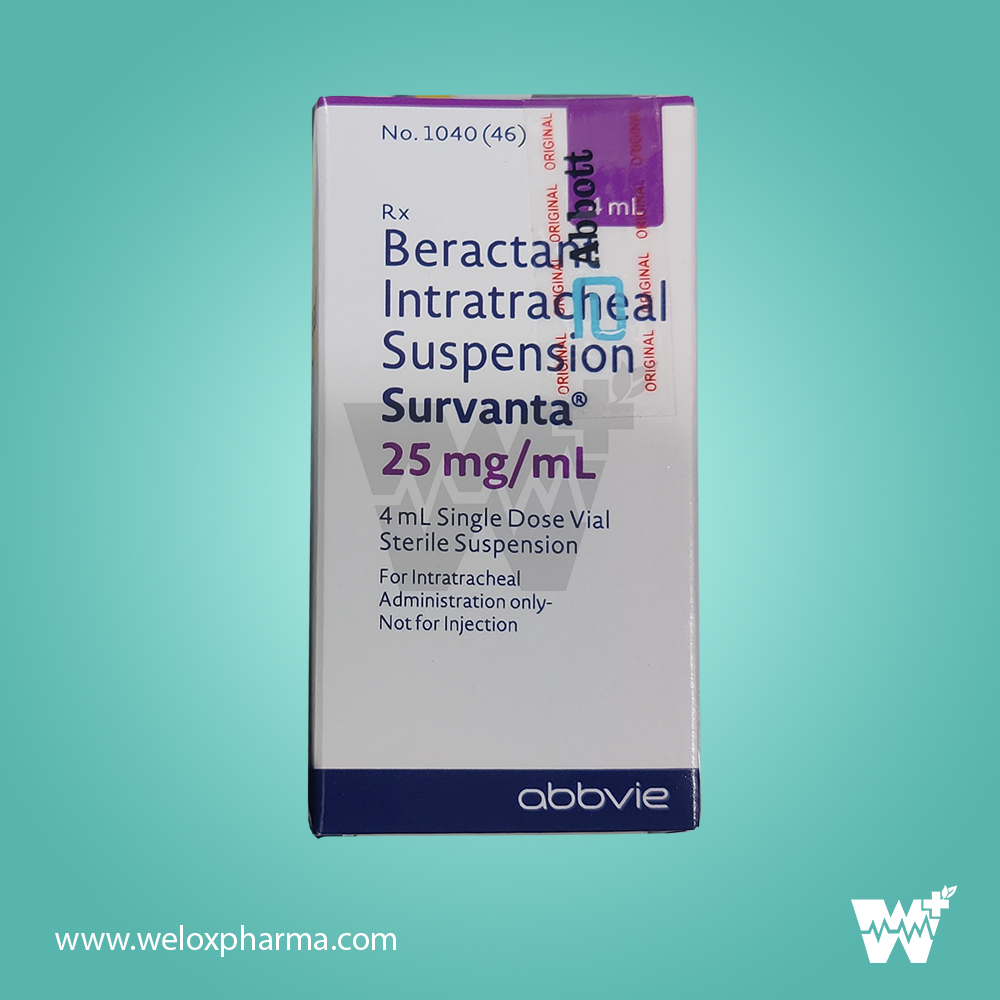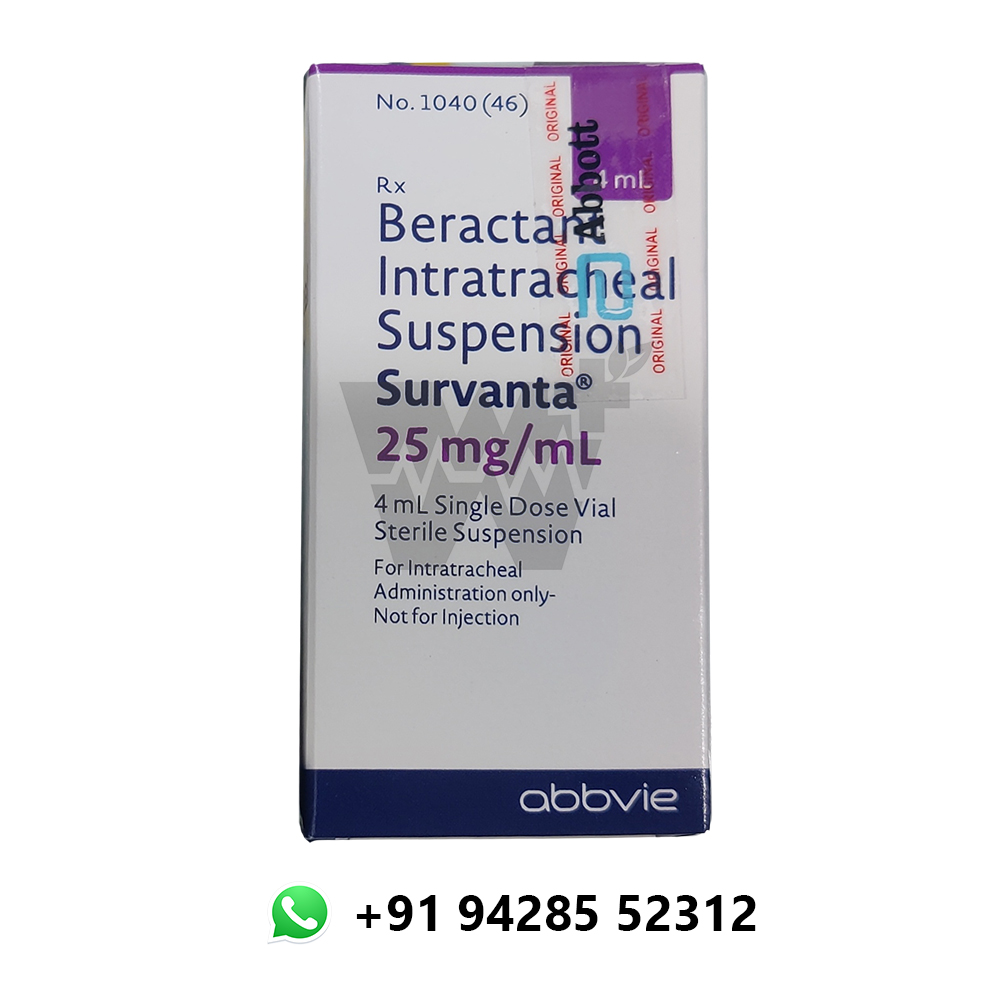



SURVANTA INJECTION 4ML belongs to a class of drugs called pulmonary surfactants. It is used in the treatment/prevention of premature infants suffering from or at risk of a condition called respiratory distress syndrome (RDS). Respiratory distress syndrome, or RDS, is caused by insufficient lung surfactant.
SURVANTA INJECTION 4ML contains Beractant, a natural surfactant that acts similarly to the baby's own surfactant, helping your baby to breathe normally. It will help your baby breathe normally until it produces its own surfactant.
SURVANTA INJECTION 4ML will be given to your baby in a hospital by a suitably trained doctor. Sometimes, SURVANTA INJECTION 4ML may cause a slow heart rate, endotracheal tube blockage, and low blood oxygen levels. Talk to the doctor if you have any concerns.
The administration of SURVANTA INJECTION 4ML to your newborn may impair your baby's lungs' ability to absorb oxygen. As a result, your baby will be closely monitored by a nurse or doctor so that oxygen and ventilatory support can be adjusted as needed. If your baby has any problems while being treated with SURVANTA INJECTION 4ML, consult your doctor as soon as possible, even if you do not know the condition is related to the medicine.
Treatment of Respiratory distress syndrome (RDS)
SURVANTA INJECTION 4ML contains Beractant as a natural surfactant. SURVANTA INJECTION 4ML is used to treat respiratory distress syndrome (RDS) in newborn premature infants weighing 700 g or more at delivery. It is also used to treat premature babies who are in danger of developing RDS and require a tube put into their windpipe for stabilisation or who have indications of surfactant deficiency. It functions similarly to your baby's own surfactant, assisting your infant in breathing healthily. It will allow your infant to breathe normally until his or her own surfactant is produced.
SURVANTA INJECTION 4ML will be given to your baby in a hospital by a trained healthcare professional. SURVANTA INJECTION 4ML should be administered via the endotracheopulmonary route. It should only be administered with adequate facilities for ventilation and monitoring babies with RDS (respiratory distress syndrome).
Store in a cool and dry place away from sunlight